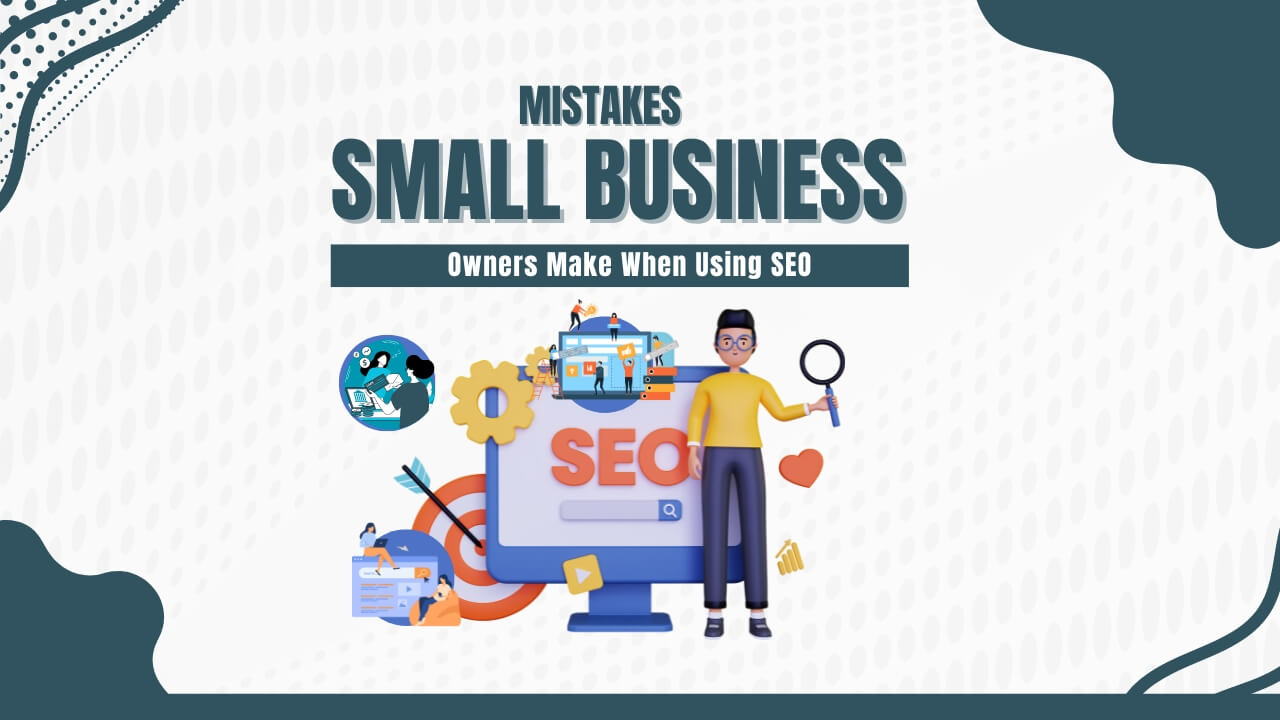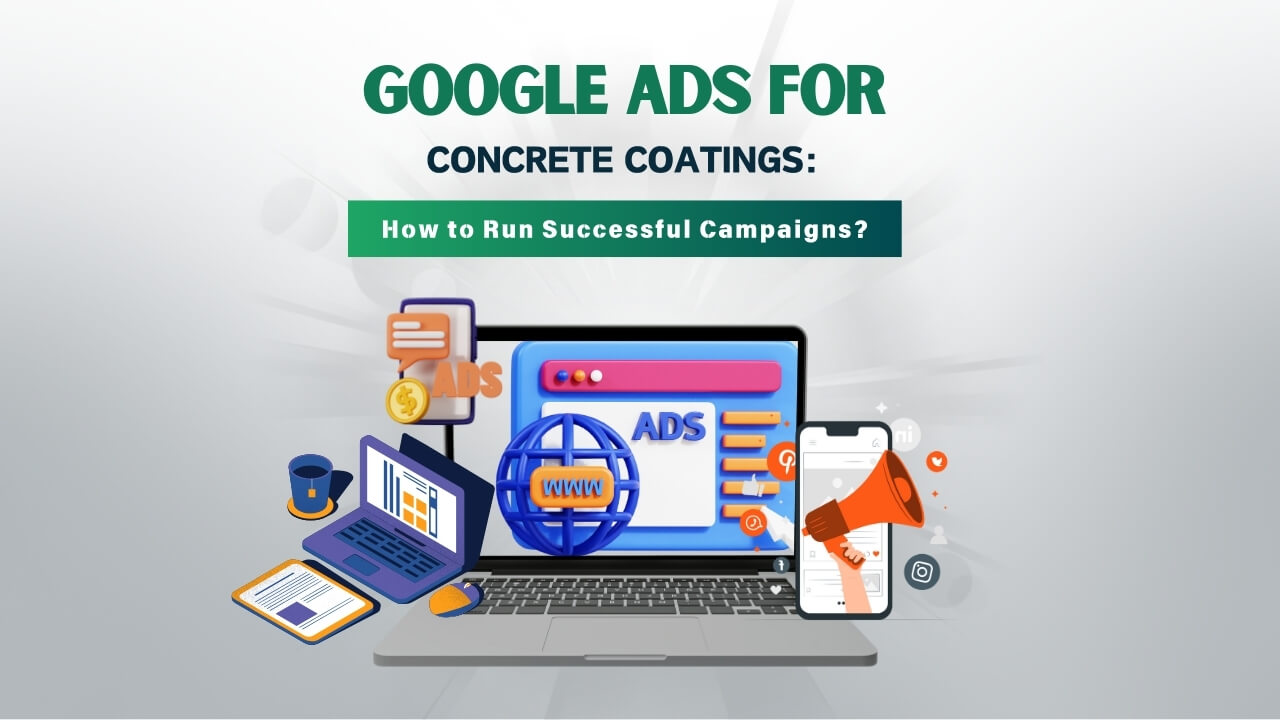Introduction
In the digital age, the success of eCommerce ventures mainly depends on the effectiveness of their online advertising strategies.
With numerous advertising platforms available in the market, businesses often find it difficult to decide where to effectively put their budget.
Among so many options available, Google Ads and Facebook Ads are two of the most influential and powerful platforms in the digital advertising realm.
Both platforms offer unique advantages and capabilities, making them indispensable tools for eCommerce businesses aiming to boost their online presence to drive traffic and also looking to increase sales.
Google Ads, also known as Google AdWords, mainly operates on the largest search engine on the planet i.e Google. It allows businesses to easily appear right at the moment whenever the potential customers are searching for a particular product.
The platform’s strength mainly lies in its ability to display ads based on user search queries, offering a direct response to the immediate needs or interests of the users. This intent-driven advertising can be incredibly effective for intent based businesses who are mainly looking to drive more and more traffic and to increase the sales.
On the other hand, Facebook Ads is known as one of the social networking giant’s. Its extensive user data enables businesses to reach their targeted audience through highly targeted ads.
With over 2.8 billion active users everyday, Facebook offers unparalleled reach and the ability to connect with their audience on a personal level.
The platform’s detailed targeting options allows the advertisers to easily segment the audiences based on demographics, interests, behaviors, and more, making it one of the excellent tools for building brand awareness and nurturing customer relationships over time.
Choosing between Google Ads and Facebook Ads both can be equally challenging for eCommerce businesses. Each platform comes with various benefits and caters different stages of the customer journey.
While Google Ads excels mainly for capturing the demand and driving immediate sales, Facebook Ads are exceptional at creating demand and engaging users at the top of the funnel. The decision on which platform, where to invest mainly depends on various factors, including the business’s marketing objectives, target audience, and budget constraints.
In this comprehensive comparison, we will further be looking into the intricacies of both Google Ads and Facebook Ads, examining their targeting capabilities, return on investment, ease of use and much more.
Sujit Shukla’s ultimate goal is to provide you with effective knowledge of the eCommerce businesses with the insights which will help you to make informed decisions about their advertising strategies, ultimately guiding them to choose the right platform for their specific needs and objectives.
Understanding Google Ads
Google Ads, as you know is a primary advertising platform provided by Google, And has been a cornerstone of digital marketing strategies for over two decades. Its ultimate strength mainly lies in the vast reach of the Google Search Network and the precision of intent-driven advertising.
For eCommerce businesses, Google Ads do offer a unique opportunity to showcase their products and services in front of their audience at that exact moment whenever they are searching for that particular product.
Further we will be looking into how Google Ads works, and which all types of ads are most beneficial for eCommerce, and what all are the advantages they offer.
How Google Ads Works
Google Ads operates on a pay-per-click (PPC) model, where advertisers have to effectively bid on certain keywords that are relevant to their products or services.
When users enter a query into Google, the search engine performs a complex calculation based on the advertisers’ bids and the quality of their ads, including relevancy and their landing page experience, to determine which ads to display first.
This model ensures that businesses should only pay when someone clicks on their ad, making it one of the cost effective strategies to drive more and more traffic.
Types of Google Ads for eCommerce
- Search Ads: These are basically text based ads that appear on the Google search results pages above or below the organic search results. For eCommerce businesses, search ads are invaluable to capture high-intent traffic, as they allow advertisers to effectively showcase their ads to those who are actively searching for their products or services.
- Shopping Ads: Google Shopping ads display product listings at the top of Google search results. These ads include some of the key information like the product image, price, and merchant name, making them highly attractive for the buyers. Shopping ads are powered by a product feed uploaded to Google Merchant Center, making it easier for eCommerce businesses to showcase their entire inventory.
- Display Ads: Display ads appear across Google’s vast network of websites, reaching around 90% of the internet users. These visually engaging ads can target users based on their interests, demographics, or even their previous interactions with the advertisers, making them one of the excellent tools for retargeting and to create brand awarness
Advantages of Using Google Ads for eCommerce
- High Intent Targeting: Google Ads can easily capture the users with high purchase intent, making it highly effective to drive more sales. By targeting specific search queries, eCommerce businesses can easily reach their potential customers who are ready to buy.
- Measurable ROI: Google Ads offers advanced tracking and analytics tools, allowing businesses to measure the return on spend precisely. This data-driven approach enables advertisers to optimize their campaigns for better performance.
- Flexible Budgeting: With no minimum spending required, Google Ads allows businesses of all sizes to start advertise on their platform. Advertisers can also control their daily spending, adjust bids, and pause or stop campaigns whenever they want, offering flexibility and control over advertising costs.
- Wide Reach: Google’s extensive network ensures that your ads reach effectively to a wide range of audience, not just on Google search but across millions of websites and apps. This wider reach is very much valuable for eCommerce businesses who are looking to expand their visibility.
Google Ads provides eCommerce businesses with some powerful tools to drive traffic and sales, offering targeted advertising solutions that can easily attract the users at various stages of the buying process. With mainly focusing on high-intent users, measurable results, and flexible budgeting, Google Ads is an essential component of any comprehensive eCommerce marketing strategy.
Understanding Facebook Ads
Facebook Ads give users extensive data of Facebook, offering eCommerce businesses a powerful tool for reaching and engaging their target audience. With a user base that spans billions globally,
Facebook provides various opportunities for businesses to connect with potential customers. Further in the section we together are going to look into how Facebook Ads work, the variety of ad formats available, and the unique advantages of using Facebook for eCommerce advertising.
How Facebook Ads Work
Facebook Ads also operates on a bidding system same as Google Ads but mainly focusing on audience characteristics rather than search intent.
Advertisers can effectively create campaigns targeting users based on the specific criteria, including age, interests, behavior, location, and more.
This allows eCommerce businesses to create highly personalized advertising messages to aim specific audience segments.
Ads can be appeared in several placements across Facebook’s family of apps and services, including Instagram, Messenger, and the Audience Network, providing a wide canvas for brand exposure.
Types of Facebook Ads for eCommerce
- Carousel Ads: These allow advertisers to showcase up to Ten images or videos within a single post, each will be having its own link. Carousel Ads are perfectly suitable to show multiple products, highlighting different features of a single product, or telling a brand story in sequence.
- Collection Ads: These ads are especially designed for the mobile users, Collection Ads offer an effective shopping experience. They can easily combine a primary video or image with a bunch of products, allowing users to effectively browse and purchase directly from the ad.
- Dynamic Ads: Dynamic Ads automatically promote products to users who have expressed interest on your website, in your app, or elsewhere on the Internet. This retargeting feature is highly effective to reach out their potential customers with personalized ads based on their previous interactions with your brand.
Advantages of Using Facebook Ads for eCommerce
- Advanced Targeting Capabilities: Facebook’s extensive data on user behavior and preferences allows precise targeting of the audience. ECommerce businesses can use this to their advantage to create the ads that resonate with the specific interests and needs of their target market.
- Visual Engagement: By focusing mainly on the visual content, Facebook Ads can generate higher engagement rates. Eye-catching images, videos, and interactive formats like Carousel and Collection Ads can significantly increase the user interaction and can effectively turn that interaction into a conversion.
- Cross-Platform Reach: Advertising through Facebook Ads extends beyond just Facebook itself. Advertisers can also reach their audience widely through Instagram, Messenger, and the Audience Network, ensuring a broad exposure.
- Customization and Flexibility: Facebook Ads do offer a high degree of customization, from ad formats to also other targeting options. Combined with the ability to adjust campaigns in real-time based on performance data, eCommerce businesses have the flexibility to effectively optimize their advertising efforts.
- Social Proof and Engagement: Ads on Facebook can easily encourage social interaction and various actions such as likes, comments, and shares. This social proof can increase the credibility of your brand and products, leading to higher customer trust and conversions.
Facebook Ads present a dynamic and flexible advertising solution for eCommerce businesses, providing precise targeting, engaging visual formats, and wider reach across all the other platforms.
By leveraging the social nature of Facebook and its detailed user insights, eCommerce advertisers can easily create highly personalized and effective advertising campaigns that resonate with their target audience.
Target Audience and Reach
The success of any eCommerce advertising campaign depends mainly on its ability to reach and engage the right audience.
Google Ads and Facebook Ads have different routes and strategies to connect with potential customers, each comes with its own strengths and weaknesses.
By Understanding these you can easily help businesses to effectively tailor their advertising strategies to various platforms that best matches their target audience and marketing goals.
Google Ads: Intent-Based Targeting
Google Ads primarily focuses on the user intent, capturing the potential customers based on the searches they are actively searching on Google. This makes it incredibly powerful to effectively reach the users who have a clear intent to purchase or learn more about specific products or services.
- Reach: Google’s search engine gets a billion of searches per day, offering an immense potential reach for ads. Additionally, the Google Display Network extends this reach across millions of various other websites, covering almost 90% of internet users all around the Globe.
- Targeting Capabilities: Keyword targeting in Google Ads allows advertisers to effectively bid on specific terms related to their products or services. This means that the ads are shown for the specific search queries that indicate they’re looking for something specific, matching the advertiser’s offerings. Moreover, demographic and location targeting can refine this further, mainly focusing on highly demanded users who are actively searching for the products.
Facebook Ads: Demographic and Interest-Based Targeting
In contrast, Facebook Ads analyze the social platform’s detailed user data to target their ads based on demographics, interests, behaviors, and more. This allows for a more effective approach to reach out to their potential customers, even before they explicitly search for a product or service.
- Reach: With over 2.8 billion active users, Facebook offers a wider reach. By considering Instagram, Messenger, and the Audience Network, the potential reach expands even further, covering a diverse range of Facebook users.
- Targeting Capabilities: Facebook’s targeting options are highly detailed, allowing advertisers to target their audience based on the age, interests, behaviors, location, and even engagement with specific content. This enables eCommerce businesses to effectively tailor their message and to resonate deeply with their targeted audience, fostering higher engagement and potential for conversion.
Comparative Analysis
- High-Intent vs. Creating Demand: Google Ads is most effective to capture high-intent traffic, and to effectively reach the users whenever they are searching for that specific product. This direct response marketing can lead to higher conversion rate of Ecommerce. Facebook Ads, on the other hand, excel to create demand, reach users based on their interest and behaviors, and engage them through highly compelling visual content.
- Audience Insight and Engagement: Facebook provides deeper insights into the audience’s lifestyles and preferences, offering a platform for brand storytelling and community building. This can be particularly beneficial for new product launches or brands looking to establish a loyal customer base.
- Cross-Platform Strategies: For many eCommerce businesses, the most effective advertising strategy might not be choosing one platform over the other but rather using both in tandem. Google Ads can capture users with immediate purchase intent, while Facebook Ads can build brand awareness and nurture customer relationships over time.
Choosing between Google Ads and Facebook Ads—or deciding to leverage both—depends on an eCommerce business’s specific goals, target audience, and where their potential customers are looking to buy.
While Google Ads offers very high reach for users who have high purchase intent, Facebook Ads provide unparalleled targeting capabilities to engage the users based on the demographics and behavior.
Target Audience and Reach
The success of any eCommerce advertising campaign mainly depends on its ability to reach and engage the targeted audience.
Google Ads and Facebook Ads offer different pathways for connecting with potential customers, each has its own strength and limitations.
Understanding these can help businesses to effectively tailor their advertising strategies with the platforms that best match with their target audience and marketing goals.
Google Ads: Intent-Based Targeting
Google Ads mainly focuses on the user intent, capturing potential customers based on what they are actively searching for online. This makes it incredibly powerful for reaching users who have a clear intent to purchase or learn more about specific products or services.
- Reach: Google’s search engine processes billions of searches per day, offering an immense potential reach for ads. Additionally, the Google Display Network extends this reach across millions of websites, covering over 90% of internet users worldwide.
- Targeting Capabilities: Keyword targeting in Google Ads allows advertisers to bid on specific keywords related to their products or services. This means the ads are shown to users whose search queries relate for something specific, and also matches the advertiser’s offerings. Moreover, demographic and location targeting can refine this further, though the main focus remains on capturing existing demand based on search behavior.
Facebook Ads: Demographic and Interest-Based Targeting
In contrast, Facebook Ads leverage the social platform’s detailed user data to target the ads based on the specific demographics, interests, behaviors, and more. This allows for a more smooth approach to effectively reach the potential customers, even before they are searching for the product and services.
- Reach: With over 2.8 billion active users, Facebook has a vast reach which includes a wider demographic. When considering Instagram, Messenger, and the Audience Network, the reach gets expanding more and more, covering a wide range of internet users.
- Targeting Capabilities: Facebook’s targeting options are highly detailed, allowing advertisers to segment audiences based on a multitude of factors, including age, interests, behaviors, location, and even engagement with specific content. This enables eCommerce businesses to tailor their messaging to target their audience, fostering higher engagement and potential for conversion.
Comparative Analysis
- High-Intent vs. Creating Demand: Google Ads is most effective for capturing high-intent traffic, reaching users at the moment they’re searching for something specific. This direct response marketing can lead to higher immediate conversion rates for eCommerce. Facebook Ads, on the other hand, excel at creating demand, reaching users based on their interests and behaviors, and engaging them through visually compelling content.
- Audience Insight and Engagement: Facebook provides more deeper and valuable insights about the audience’s lifestyles and preferences, allowing the brand storytelling and community building. This can be particularly beneficial for new product launches or brands who are looking to capture a new audience base.
- Cross-Platform Strategies: For many eCommerce businesses, the most effective advertising strategy might not be choosing one platform over the other but rather using both of them simultaneously. Google Ads can easily capture users who have an immediate purchase intent, while Facebook Ads helps to build brand awareness and nurture customer relationships over time.
Choosing between Google Ads and Facebook Ads the ultimate decision depends on an eCommerce business’s specific goals, targeted audience, and on which stage potential customers are in their buying journey.
While Google Ads offers unmatched reach for users who have high purchase intent, Facebook Ads has unparalleled targeting capabilities using which brands can easily engage their users based on detailed demographic and behavioral data.
Budget and Cost Effectiveness
The flexibility and control over budgeting are one of the most appealing features of both Google Ads and Facebook Ads.
However, the way businesses should allocate their budget and manage their campaigns for optimal cost-effectiveness might vary between these two platforms.
This section delves into the cost structures, budgeting strategies, and tips for achieving the best ROI with careful financial planning.
Google Ads: Budgeting for High-Intent Traffic
Google Ads operates on a pay-per-click (PPC) model, where the cost is determined by factors like keyword competition, quality score, and the keyword bidding strategy. For eCommerce businesses, this means that the cost-effectiveness of Google Ads campaigns can be influenced by how all these factors are effectively optimized.
- Cost Structures: The average CPC might vary depending on the industry and competitiveness of the keywords targeted. However, Google Ads do offer several bidding strategies that can help the advertisers to control the cost of Ads, such as manual bidding, enhanced CPC, and CPA (cost per acquisition) targeting.
- Budgeting Strategies: To maximize cost-effectiveness on Google Ads, eCommerce businesses should mainly focus on optimizing their quality score through relevant ad copy, Keyword targeting, and by creating high quality landing pages. Moreover, utilizing the negative keywords will help you to reduce the wasted spend by excluding search terms that are not relevant to your business.
Facebook Ads: Maximizing Engagement Within Budget
Facebook Ads’ cost is mainly based on the cost per thousand impressions (CPM) or CPC, with pricing mainly influenced by ad quality, relevance score, and audience targeting. Unlike Google Ads, Facebook Ads’ main strength lies in creating engaging content.
- Cost Structures: The CPM and CPC on Facebook Ads might fluctuate based on the competition of the audience and also based on the ads engagement level. Advertisers can effectively choose from various bid strategies, and can also manage their spending effectively.
- Budgeting Strategies: For Facebook Ads, cost-effectiveness often hinges on the ad creative’s ability to engage the target audience. A/B testing different ad formats, visuals, and copy can identify the most effective combinations. Furthermore, do keep on refining the audience targeting to reach the most relevant users to increase the campaign performance.
Comparative Insights on Cost Effectiveness
- Understanding Audience and Intent: Google Ad does offer a higher ROI for businesses targeting users with higher purchase intent, potentially justifying higher CPCs for competitive keywords.On the other side Facebook Ads can be more cost-effective for building a long time engaging users based on the interests and demographics, even if the path to conversion is longer.
- Balancing Spend and Performance: Both platforms do offer tools to effectively track the performance and ROI, which is very much essential for adjusting the campaigns and the campaign budget. For Google Ads, focusing on conversion rate optimization is the key, whereas, for Facebook Ads, engagement metrics and social signals can increase the chance of success.
- Synergistic Budget Allocation: Instead of viewing the budgeting for Google Ads and Facebook Ads in isolation, eCommerce businesses can achieve better overall cost-effectiveness by allocating the budgets on both the platforms based on their sales funnel stages. Ultimately the brand awareness and engagement can easily be pursued by Facebook Ads, with Google Ads mainly attracting the Ready to buy users.
Ease of Use and Management
Both Google Ads and Facebook Ads both come with their respective dashboards, tools, and interfaces specifically designed to help the advertisers and to manage their campaigns easily. The ease of use of these platforms can effectively impact eCommerce businesses making it easy to monitor the performance and based on that to make adjustments, and ultimately achieve their advertising objectives.
Google Ads: Navigating Complexity for Precision
Google Ads do provide a comprehensive set of tools to effectively manage the campaign and their keywords. While this robustness is invaluable for the detailed campaign optimization, it can also present a steep learning curve for the new users.
- Interface and Tools: The Google Ads interface does provide a detailed report of the campaign performance, including metrics like click-through rates, conversion rates, and cost per conversion. Tools such as the Keyword Planner and Ad Preview and Diagnosis tool are very much essential for planning and to optimize the campaign.
- Management Challenges: Managing a Google Ads campaign can sometimes become tuff, especially when the advertisers are handling multiple ad campaigns or targeting a wide range of keywords. The platform does require regular monitoring and adjustment to maintain the effective performance, including the bidding adjustments, keyword refinement, and A/B testing of ad copy.
Facebook Ads: Streamlined for Engagement and Reach
Facebook Ads Manager is designed mainly to focus on the user experience, making it accessible for all types of advertisers. Its intuitive interface allows for easy ads creation, and easy ad management, and optimization of campaigns.
- Interface and Tools: Facebook Ads Manager does simplify the campaign creation with guided setup process and visual tools for designing ads. The platform offers detailed targeting and retargeting options, along with analytics to track engagement, reach, and conversion metrics.
- Management Challenges:Facebook Ads Manager masters its full potential especially its advanced targeting and optimizing its features. Successful management often requires continuous experimentation of various ad formats, audience segments, and creating the effective strategy to find out which align the best.
Comparative Insights on Ease of Use
- Learning Curve and Accessibility: Both platforms have their learning curves, with Google Ads prioritizing more technical aspects and Facebook Ads mainly prioritizing the user experience. New advertisers might find Facebook Ads more easier as compared to Google Ads, as Google Ads require more initial learning or even professional assistance for effective optimization.
- Automation and AI Tools: Both platforms offer automation features and AI-driven tools to effectively manage their campaigns. Google Ads has smart bidding options and can effectively create responsive ads, while Facebook Ads on the other hand do offer automated rules and dynamic creative optimization. These features can help reduce the manual workload of the campaign.
- Support and Resources: Google and Facebook both provide extensive support and learning resources primarily including tutorials, forums, and direct support options. By effectively using all these resources, advertisers can significantly enhance the ease of managing the campaigns on either platform.
Conclusion
The digital advertising landscape offers a wealth of opportunities for eCommerce businesses to connect with their target audience, drive sales, and build brand loyalty. Through the lens of Google Ads and Facebook Ads, businesses can choose the platform that best aligns with their marketing objectives, whether it’s capturing high-intent traffic, engaging potential customers, or a combination of both.
Success in digital advertising requires a strategic approach, leveraging the unique strengths of each platform to achieve specific business goals. By analyzing real-world success stories, eCommerce businesses can gain insights into effective strategies and best practices for digital advertising.
As the digital marketplace continues to evolve, staying informed and adaptable will be key to leveraging these powerful advertising tools to their full potential, driving growth and success in the competitive eCommerce landscape.






